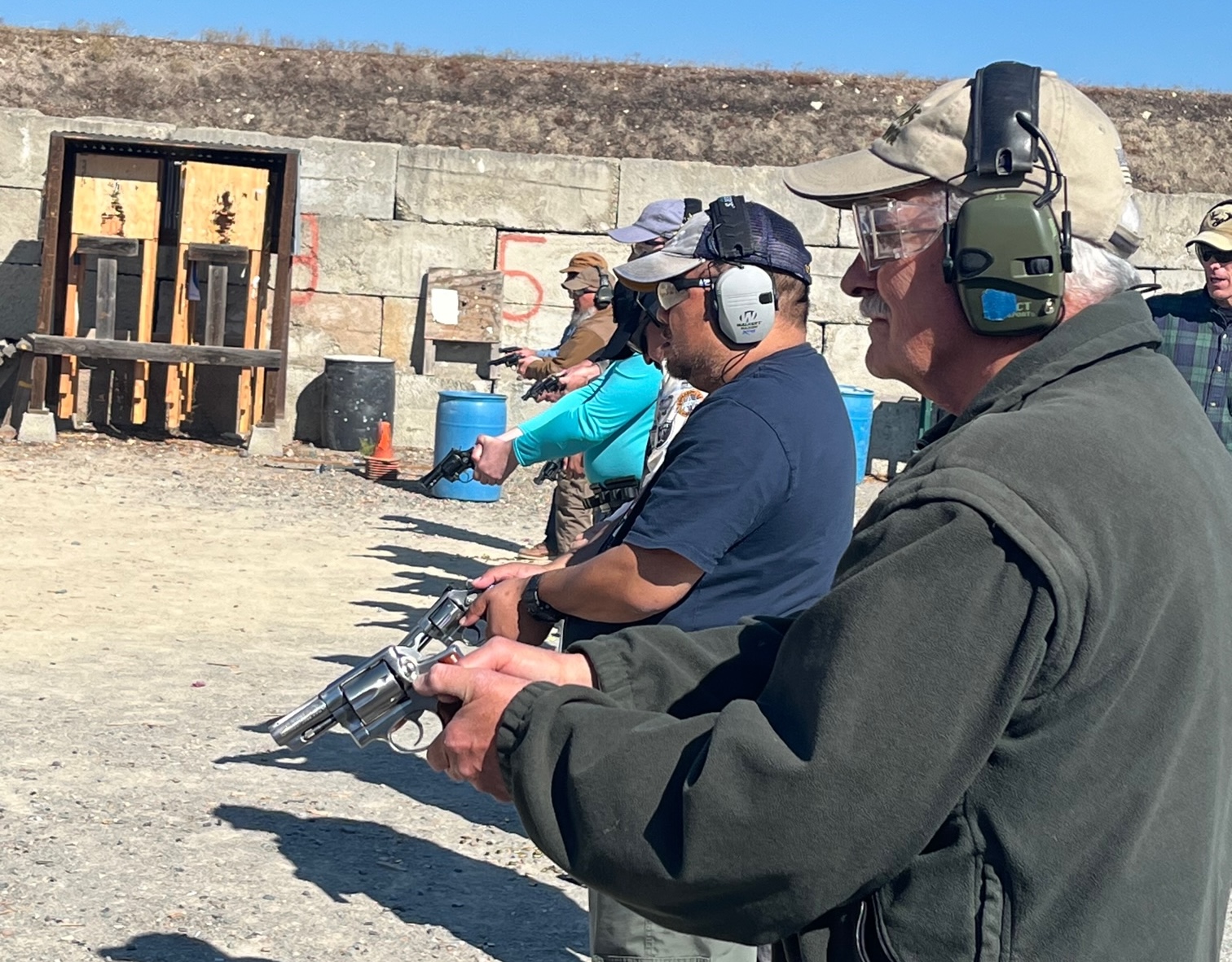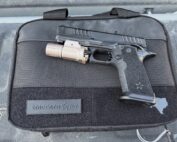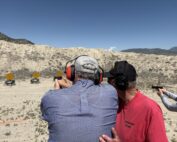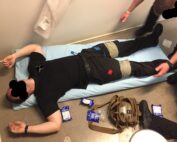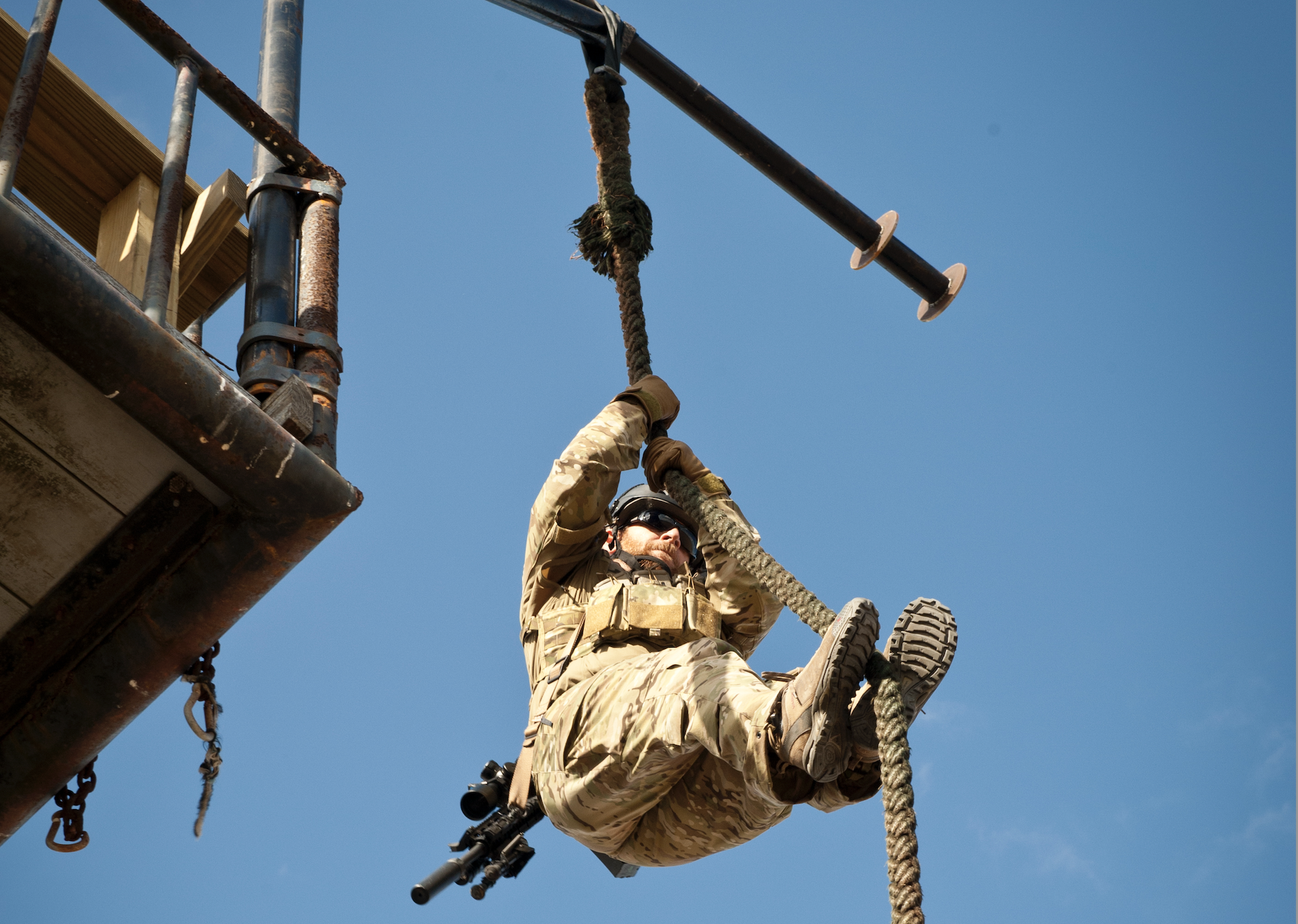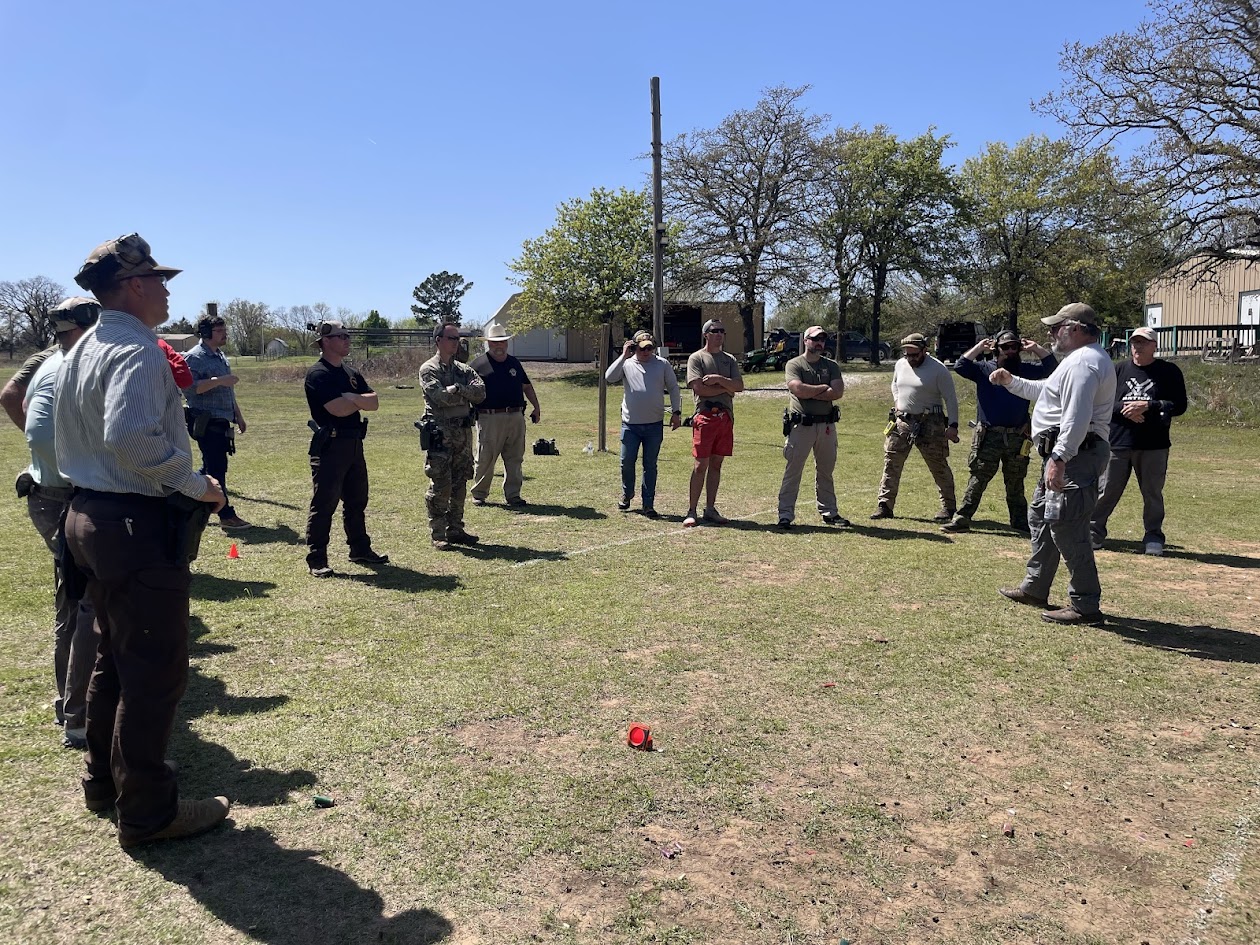
IMG_5155
There’s a balance to maintain between safety and acceptable risk
We can agree that there’s room for a variety of techniques in firearms training and law enforcement tactics. However, we must also honor fundamental principles.
One of these is safety—an important consideration in all law enforcement operations we cannot ignore. However, we also cannot allow ourselves to be hamstrung by an inappropriate emphasis on safety. We must maintain a balance between acceptable risk and safety to complete our mission.
Out of Balance
Unfortunately, I see indications we are not maintaining this balance regarding firearms-ready positions.
I work with police officers from across California in a training environment. I’m seeing a trend—particularly with long guns—of officers using ready positions where the muzzle of the firearm is just barely depressed from a firing position. Frequently, the muzzle is only an inch or two below the aiming point.
This position has become so commonplace that almost 75% of the officers in a recent class used it as their default ready position, even during training exercises where “No Shoot” targets were placed between the officers and the “Shoot” targets to simulate the presence of multiple innocents downrange, in the line of fire.
The First Problem
The most obvious problem is that the officer risks pointing his firearm at a person they have not yet identified as a lethal threat. It’s a staple of firearms safety that you “Never let the muzzle cover anything which you are not willing to destroy.” Holding your firearm in a position that is just barely depressed results in exactly that. An officer cannot avoid muzzling an innocent suspect when their firearm is held like this.
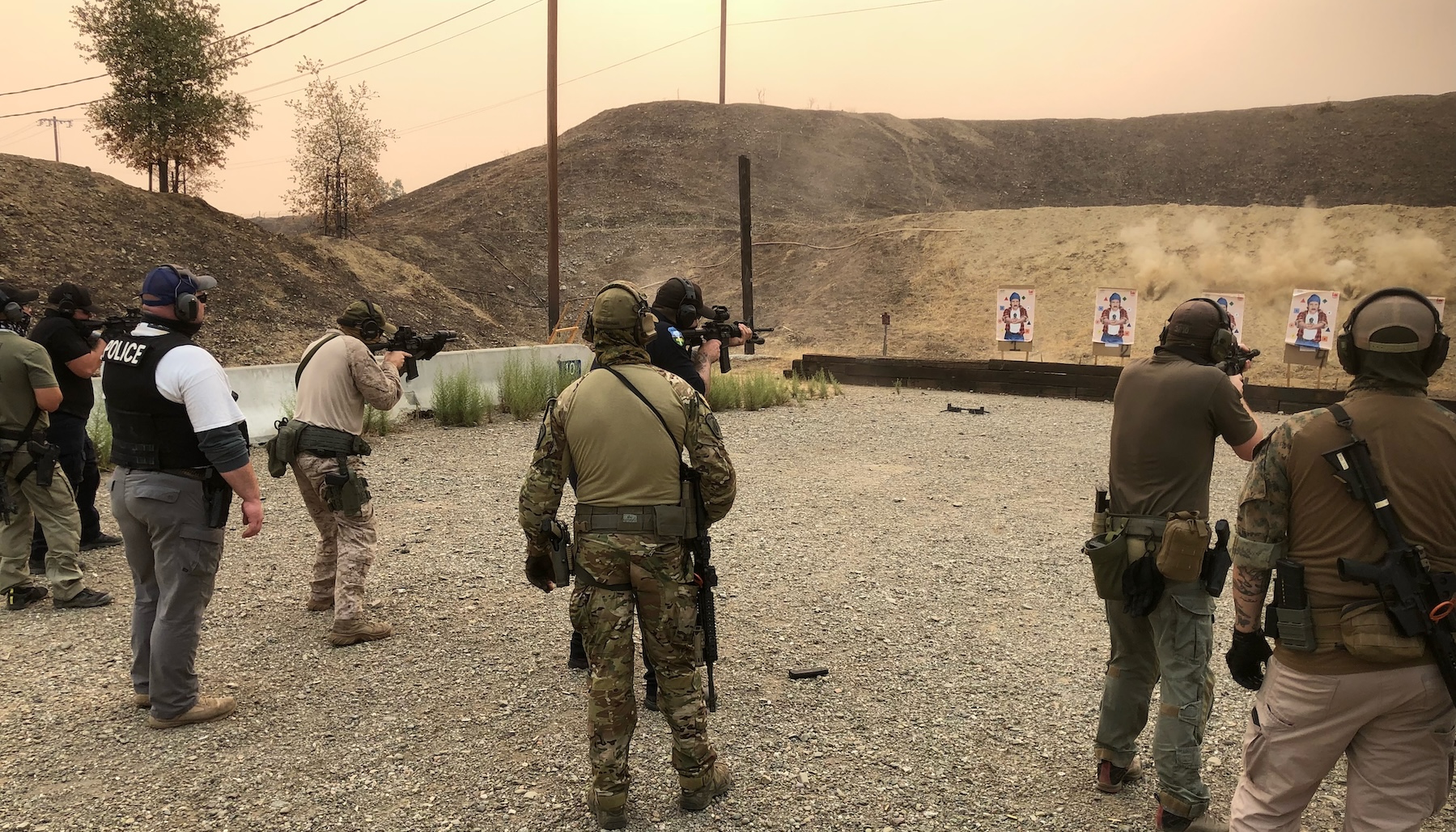
If these officers were not shooting, then these muzzles would be too high. But they are shooting (PC – author).
When an officer has determined that a suspect is a threat to innocent life, and the use of lethal force is appropriate, then pointing a firearm at them is appropriate. Prior to that, however, doing so is reckless and unsafe. It may violate state law and be a violation of department policy.
It is unsafe and inappropriate to knowingly point a firearm at an innocent – at any time.
The Next Problem
There’s another safety risk attached to these “ready” positions. When an officer’s firearm is on target, and the muzzle is just barely depressed, it significantly obstructs his field of view. The raised handgun or long gun, in a near-firing position, blocks the officer from seeing anything covered by it, depriving him of the vital information that he needs to make an accurate use-of-force decision.

Alliance, OH, police officers are moving through a structure with their muzzles depressed (PC—Benelli Shotguns).
Imagine an officer with a long gun mounted to his shoulder, and the muzzle depressed just a few inches from level. If this officer is confronting a suspect, the muzzle of his weapon is probably pointing at the center of the suspect’s chest and his waist, which will likely prevent the officer from seeing just about everything below the suspect’s nipples. If the suspect’s hands are not raised, they will probably be hidden from view. Objects carried at or below the beltline will probably not be visible either. If the suspect decides to draw, it won’t enter the officer’s vision until the draw sequence is nearly completed and the suspect is ready to fire (assuming the suspect delays firing until the gun is at eye level).
Other risks include – threats hiding behind low cover or trip hazards. Similarly, innocents may appear, like a Jack-In-The-Box, surprising the officer, leading to an accidental discharge from the startle effect. This is likely during an active killer response or another event with innocents hiding from violent suspects nearby.

Patrol officers moving down a hallway with their muzzles depressed – they can get much better visual input this way (PC – Benelli Shotguns)
Nothing good comes from reducing the amount of information or time an officer has to make a use-of-force decision. However, that is the inevitable result when an officer blocks his field of view through a higher-ready position.
Counter Argument
Proponents of the tactic argue that keeping the weapon in this position allows them to make a faster shot when the decision to fire is made, which increases the officer’s safety.

It sure looks like that muzzle is above the waist. Can you see enough of what you need to? (PC – Benelli Shotguns)
In a controlled training environment like the shooting range, there may be a time advantage in keeping the weapon’s muzzle just barely depressed. Contrast that with a classic “low ready” position, where the muzzle is pointed at the ground just in front of the subject. In a study conducted by Dr. Paul Taylor on the effect of muzzle position on shooting responses, researchers measured a difference of approximately 0.11 seconds in response times between an aimed-in position and a low ready position (with the gun held at navel level).
The trade-off for this increase in speed was a decrease in good decision-making, however. Dr. Taylor’s study found that nearly two-thirds of officers made a mistake in judgment and shot a person “armed” with only a cell phone when they held the weapon aimed at the subject’s chest. In contrast, only approximately 30% of the officers firing from a low-ready position made the same mistake.
Would you trade 11/100ths of a second to more than double the chance that you won’t shoot an innocent person?
Other Considerations
Keeping the weapon in a near-firing position is fatiguing and may be inappropriate for extended searches or movement. It may also make weapon retention more difficult in an environment where officers are subject to close-range ambush.
There’s little room for absolutes in tactics and weapon craft. We should allow properly trained personnel to alter their tactics, techniques, and procedures when necessary. This can include a higher-ready position when appropriate.
Baselines
Keeping the weapon up in a near-firing position as your “ready” position is fraught with danger. It is too easy to point your weapon at people not yet identified as a lethal threat while robbing yourself of the information necessary to make good use of force decisions when the weapon is blocking your view.
Please proceed with great caution and deliberation. Your life and the lives of innocents depend on it.
God bless you all, and be safe out there.
Reference
“Engineering Resilience” Into Split-Second Shoot/No Shoot Decisions: The Effect of Muzzle Position. Taylor, Paul L., Police Quarterly 0(0) 1-20, 2020.
About the Author: Mike Wood is a law enforcement trainer and an instructor with National Training Concepts. He authored Newhall Shooting: A Tactical Analysis, about the 1970 gunfight that shaped police training, equipment, and culture for generations. Mike also serves as the Senior Editor at RevolverGuy.com.


 (No Ratings Yet)
(No Ratings Yet)
